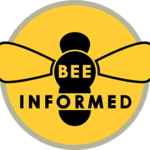Survivorship Survey
Last year, 250 OR/WA backyarder beekeepers were surveyed during April seeking information on overwintering colony losses/survivorship, and management such as colony feeding, sanitation and Varroa control efforts. Results: http://www.pnwhoneybeesurvey.com/annual-surveys inculding a report (see individual club reports) for WVBA. I appreciate the 22 responses from WVBA Beekeepers last year.
Colony loss levels from all respondents were 29%. Beekeepers with both 8-and 10-frame Langstroth hives had 27% loss, loss was double that number for 5-frame nucs and top bar hives while Warré hive losses were intermediate between the two groups. For WVBA, overall losses were 30% (compared to 29% of total survey). Langstroth 8 frame and 10 frame Langstroth hive losses were 30 and 31% respectively. (See WVBA club report at above address.)
For the most recent overwintering period the electronic survey will be open March 17th and continue through April. It should take no more than 5-10 minutes to complete. I will briefly explain the survey and bring paper copies (for those who prefer them) to the March WVBA meeting – I am hopeful to receive a larger response from WVBA (the respondent number was reduced last year). I will be able to posts results by late May/early June (here and on pnwhoneybeesurvey site).
Information requested will be very similar to last year so I can compare last year with the current one. If you would like to review the inquiries in preparation for the survey please locate the “2016 PNWals” pdf download available on the websites blog page and by simple Google search.
While the main emphasis of the survey revolves around reporting how many colonies you had last fall compared to this spring, which we assess through hive location, hive types and originations (meaning were they overwintered colonies, nucs or packages purchased, swarms or splits), other survey questions sometimes open up more questions than provide answers. Last year, for example, beekeepers doing several wintering preparations improved survival, but feeding or use of the sanitation alternatives we listed did not result in better survivorship, at least not directly. Those beekeepers using sugar shake or mite drop boards to monitor mite buildup had fewer overwintering losses, while the use of other sampling methods did not. Non-chemical treatments did not, directly, improve survivorship, at least for our survey respondents; use of Apivar, essential oil or formic acid significantly improved survivorship
The BeeInformed survey is also conducted in April each year. I ask that you continue to participate in this national survey as well. Although USDA funding is now in the last year of this effort, we are hoping to continue what is now a 9-year record of overwinter loss/survivorship. Our BIP report from last year is posted on the pnwhoneybeesurvey site and I include comparisons to losses in Canada and Europe. Access this survey at: http://www.beeinformed.org (it is available in April only).
Finally THANK YOU FOR SHARING THIS PAST SEASON. Please consider completing a survey for the 2015-2016 season sometime between mid-March and during April.

